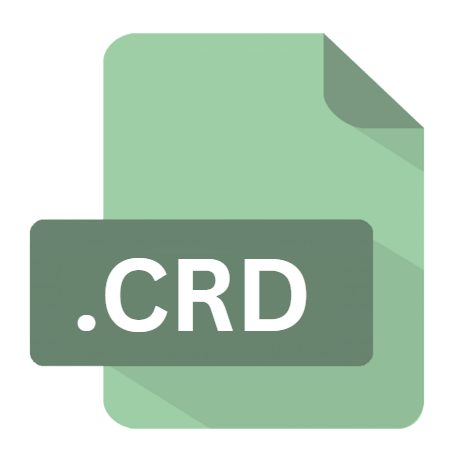.CRD File Extension

Guitar chord File
| Developer | Martin Leclerc and Mario Dorion |
| Popularity | |
| Category | Misc Files |
| Format | .CRD |
| Cross Platform | Update Soon |
What is an CRD file?
The .CRD file extension refers to a type of file used to store guitar chord diagrams. These files are essential for musicians, particularly guitarists, as they provide a visual representation of chords, aiding in learning and playing music.
A .CRD file contains the necessary information to display chord shapes and finger placements on a guitar fretboard, making it a valuable resource for both beginners and experienced players.
More Information.
The .CRD file format emerged as guitar technology and music software began to evolve in the late 20th and early 21st centuries.
Initially, guitarists relied on paper chord charts and books, but with the advent of personal computers and digital music tools, there was a growing need for digital chord storage.
The initial purpose of .CRD files was to provide a way to digitally store and share chord diagrams. This was particularly useful for guitarists who wanted to create, edit, or access chord charts on their computers without the hassle of manual notation.
As music software grew in sophistication, the .CRD format became a standard in various guitar learning and notation programs.
Origin Of This File.
The .CRD file extension is primarily associated with various guitar-related software programs and chord libraries.
Its origin can be traced back to the early days of digital music software, when developers sought a standardized way to store and share guitar chord diagrams.
The format was designed to be simple and easily accessible, allowing users to integrate it into different music notation programs and chord libraries.
File Structure Technical Specification.
The .CRD file format is relatively straightforward, designed to store chord diagrams in a way that can be easily parsed by guitar software. Here’s a closer look at its file structure and technical specifications:
- Header Information: The file typically begins with metadata that includes information about the chord, such as its name and variations.
- Chord Diagrams: This section contains graphical or textual representations of the chord shapes. It might include fretboard diagrams, finger placements, and other visual aids.
- Annotations: Any additional notes or instructions related to the chord, such as strumming patterns or tips, can also be included in this section.
While the exact technical specifications can vary depending on the software that created the file, .CRD files generally follow a simple and consistent structure to ensure compatibility across different programs.
How to Convert the File?
Converting .CRD files to other formats can be necessary if you need to use them in different applications or share them with others who do not use the same software. Here are some common conversion methods:
1. Using Dedicated Software:
- Many guitar notation programs that support .CRD files also offer conversion features. Look for options within the software to export or save the file in a different format, such as
.PDFor.TXT.
2. Online Converters:
- Several online tools and converters are available that can transform .CRD files into various formats. Be cautious when using online services to ensure that your files are handled securely.
3. Manual Conversion:
- If automated tools are not available, you can manually recreate the chord diagrams in other music notation software. This approach can be time-consuming but allows for greater control over the final output.
Advantages And Disadvantages.
Advantages:
- Portability: .CRD files are lightweight and easily transferable between devices and software applications. This makes it convenient for musicians to access and share chord diagrams.
- Accessibility: The format allows for easy integration into various music software, making it a versatile tool for learning and composing.
- Ease of Use: Guitarists can quickly create, modify, and view chord diagrams without needing advanced technical knowledge.
Disadvantages:
- Limited Functionality: Compared to more advanced music notation software, .CRD files may offer limited features and customization options.
- Compatibility Issues: While the format is widely supported, there can be occasional compatibility issues between different software programs, leading to potential display problems or file corruption.
How to Open CRD?
Open In Windows
- Guitar Software: Many guitar learning and notation programs on Windows, such as Guitar Pro or TuxGuitar, support .CRD files. Simply open the software and use the “Open” function to load your .CRD file.
- Text Editors: Since .CRD files may contain textual data, you might be able to view or edit them using basic text editors like Notepad or more advanced ones like Notepad++.
Open In Linux
- Guitar Software: Some Linux-compatible music software, like TuxGuitar or MuseScore, may support .CRD files. Install the software and use it to open your file.
- Command Line Tools: Linux users can also use command-line tools to inspect or convert the file. Utilities like
catorlesscan help view text-based .CRD files.
Open In MAC
- Music Notation Software: Similar to Windows, macOS users can open .CRD files using compatible guitar notation software such as Guitar Pro or the macOS equivalent.
- Text Editors: Use text editors like TextEdit or third-party apps like Sublime Text to view or edit the file’s contents if it is in a readable text format.











